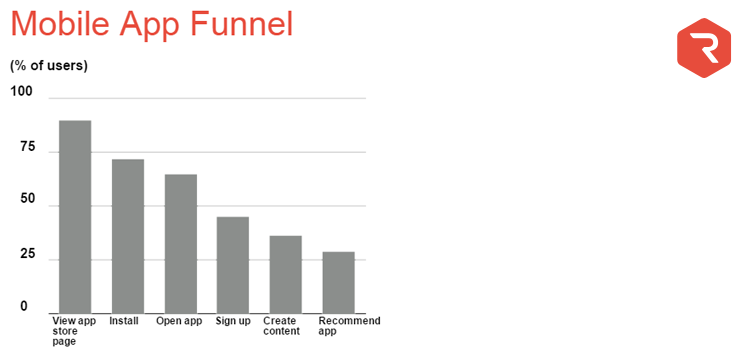We definitely love traditional mobile apps. They load offline, deliver triggered notifications when we shop and look & feel great. Mobile apps are wonderful indeed! Did you know there are 4 million apps on the Apple App Store and Google Play? That’s a big number and clearly shows we have come a long way as fast as the mobile app market is concerned.
However, long gone are the days when simple games like Flappy Bird became instant hits as the market is now overcrowded with apps of all sorts! According to a Gartner study, less than 0.01% of all mobile apps will be considered commercially successful through 2018. In a way, the future of mobile apps does look depressing!
No wonder, businesses don’t share the same enthusiasm for them – at least, not anymore. The point is most users are not comfortable in installing multiple apps. Storage, privacy policies, and app requirements are some of the issues that stall users to complete the mobile app funnel.

That’s where Progressive Web Apps win the race. Unlike mobile apps, they can immediately start using a PWA, thus eliminating the downloading and installation stages. eCommerce companies are aggressively pursuing the idea of building PWAs.
Flipkart makes history by using a PWA; gets remarkable results
In our previous article, we discussed how Flipkart nearly tripled its on-site time using a PWA. The case study published by Google Developers mentioned that the eCommerce giant, who came up with Flipkart Lite, saw a 70% increase in the conversions – which is a feat in itself!
source
What the users loved the most was the amazing speed with which they could navigate the web application – irrespective of the fact that they had low connectivity or no connectivity at all! This clearly explains why visitors spent 3.5 minutes on the website as compared to 70 seconds they would spend otherwise!
Read more: Converting Your Mobile Site Into A Progressive Web App In Under 5 Minutes
AirBerlin – the first airline in the world to develop a PWA
Through the PWA technology, AirBerlin passengers can access their personal boarding pass and further travel information about their destination at any time, wherever they are and even without an internet connection, after a one-time web check-in.
5 ways Progressive Web Apps are changing eCommerce for good
1. Better loading experience
PWA feels fast – very fast. When a user requests for web content to load, the server fills the screen with what it can immediately and then it fills content as it gets loaded. This is why it feels fast. This invariably reduces the bounce rate as the user is hooked to the content from the beginning.
2. Push notifications
Such notifications on mobile phones are read more often than emails, social media posts, etc. Yup – nearly three-fourths of consumers see push notifications as a valuable way to connect with their favorite brands. Users who have installed the PWA on their phones can see the icon on their home screen and get a reminder about both the brand name and products every time they use their phone.

Jumia, one of Africa’s leading eCommerce websites, noticed an increase in conversions by 9 times and an open rate of 38%. This strategy helped the site to re-engage with mobile users/potential customers who had abandoned their shopping carts.
Read more: Push Notifications: The Progressive Web App Your Business Needs For Growth In 2017
3. Offline functionality
It doesn’t matter whether the user is driving through a tunnel or switching to their own network from WiFi, the offline functionality of the PWA allows the user to have a seamless experience. That’s a big thing for an impatient lot like us!
4. Updated on use
Unlike mobile apps, PWAs get updated like web pages. The user always gets the latest version, whenever and wherever he or she loads the web content.
5. Discoverable and linkable
PWAs are discoverable by search engines. They can be optimized just like a website URL. They are still linkable that can be promoted, just like websites – which makes them such an awesome feature to use!
Create your own PWA with Wigzo
With high-quality features such as push notifications, add-to-home access, offline access, and fast page load that are ideal for boosting engagement in online shopping websites, PWAs are certainly here to stay. If you can’t wait to get started with creating your own PWA, we are here to help!
In one of our previous articles, we discussed PWAs in depth and also understood how Wigzo’s push notifications form a core part of their functionality. We also gave a step-by-step guide on how you can create a PWA with Wigzo. You can read it all about it here.
If you are still not sure about how it works, you could ask for a personalized demo or experiment during the free trial.















